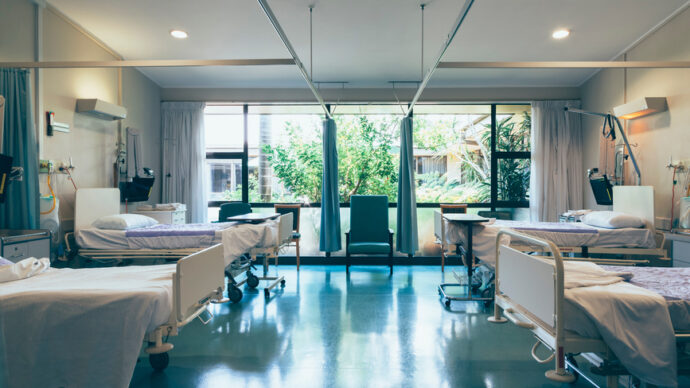
Today is World Health Day, and the WHO is launching a new campaign to help build a fairer, healthier world. In light of this mission, Sermo doctors discuss disparities among hospitals. The unprecedented pandemic has spotlighted inequities in healthcare that have been going on for far too long. Many of these disparities have not only been brought to the forefront, but they have grown larger. This is the case for many American hospitals.
According to the Washington Post, “Last May, Baylor Scott & White Health, the largest nonprofit hospital system in Texas, laid off 1,200 employees and furloughed others as it braced for the then-novel coronavirus to spread. The cancellation of lucrative elective procedures as the hospital pivoted to treat a new and less profitable infectious disease presaged financial distress, if not ruin. The federal government rushed $454 million in relief funds to help shore up its operations.
But Baylor not only weathered the crisis, it thrived. By the end of 2020, Baylor had accumulated an $815 million surplus, $20 million more than it had in 2019, creating a 7.5 percent operating margin that would be higher than most hospitals’ profits in the flushest of eras, a KHN examination of financial statements shows.
Like Baylor, some of the nation’s richest hospitals and health systems recorded hundreds of millions of dollars in surpluses after accepting a substantial share of the federal health-care bailout grants, their records show. Those included the Mayo Clinic, Pittsburgh’s UPMC and NYU Langone Health. But poorer hospitals — many serving rural and minority populations — got a tinier slice of the pie and limped through the year with deficits, downgrades of their bond ratings and bleak fiscal futures.
‘A lot of the funding helped the wealthy hospitals at a time, especially in New York, when safety-net hospitals were hemorrhaging,’ said Colleen Grogan, a health policy professor at the University of Chicago. ‘We could have tailored it to hospitals we knew were really suffering and taking on a disproportionate amount of the burden…’
Some hospitals’ finances deteriorated significantly during the pandemic. From the end of March through December, the rating agency Moody’s downgraded 28 hospitals, primarily because of weaknesses such as higher debt or more competition, said Lisa Goldstein, associate managing director at Moody’s…
Others suffered worse fates, such as Williamson Memorial Hospital, which shut down last April. The hospital, in West Virginia’s coal country, had been trying to climb out of bankruptcy protection, but ‘unfortunately, the decline in volumes experienced from the current pandemic were too sudden and severe for us to sustain operations,’ its CEO wrote on Facebook.
Conversely, many prosperous health systems emerged unscathed from the moratoriums of last spring, often due to the federal aid. ‘It gave them an ability to not have to draw down on their reserves to make up for the loss in revenue,’ said Suzie Desai, a senior director at S&P Global Ratings.”
In a recent poll of 250+ global Sermo physicians, 77% said they have personally witnessed health inequities among their patients or in their practice, hospital, or community. And 75% have noticed that health inequities are growing wider since the start of the pandemic. Eighty-three percent said these health inequities need to be urgently addressed.
Seventy-five percent of physicians have noticed that some of the richer hospitals have grown richer during the pandemic, while some of the poorer hospitals have grown poorer. And 90% believe that when poorer hospitals suffer, the patients and doctors of those hospitals are forced to bear the weight of the problems that ensue.
Below, Sermo physicians from around the world share their professional insights, perspectives, and opinions on this important topic—in their own words:
Mayo Clinic chose to put new hospitals in profitable areas–Scottsdale, Arizona, and Jacksonville, Florida. Paid for these hospitals with CASH. When my wife received a bill from a Mayo surgeon and PA (PA’s bill was higher than most surgeons’) that was 3 times the 90th percentile charge in the nation, I inquired as to what fee schedule Mayo uses. Their response, “We don’t use a fee schedule. We do market research and charge what the market will bear!” Medical capitalism. Don’t think they deserve a bail out.
General Surgery
This pandemic has shown the wide differences among healthcare users and providers even deeper
Pediatrics (excluding surgery)
in Mexico the poorer hospitals are suffering for not having the resources to attend every patient
Pediatrics (excluding surgery) – Gastroenterology
Everyday thousands of Sermo member physicians from diverse backgrounds and experiences exchange knowledge with each other. Sermo is the original medical social network that empowers today’s physicians. Over 1 million fully verified physicians across more than 150 countries come to our platform to talk with peers, participate in paid medical studies, solve challenging patient cases, contribute to the world’s largest database of drug ratings – and enjoy a few laughs along the way.
Interested in more? Check back any time and follow us on Facebook, Twitter, and LinkedIn for the latest and greatest in physician insights.
Are you a physician or healthcare practitioner?
Explore the many benefits of joining Sermo’s medical community and sign up for free today.



